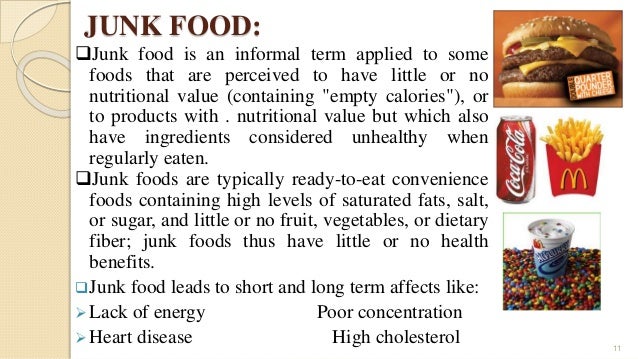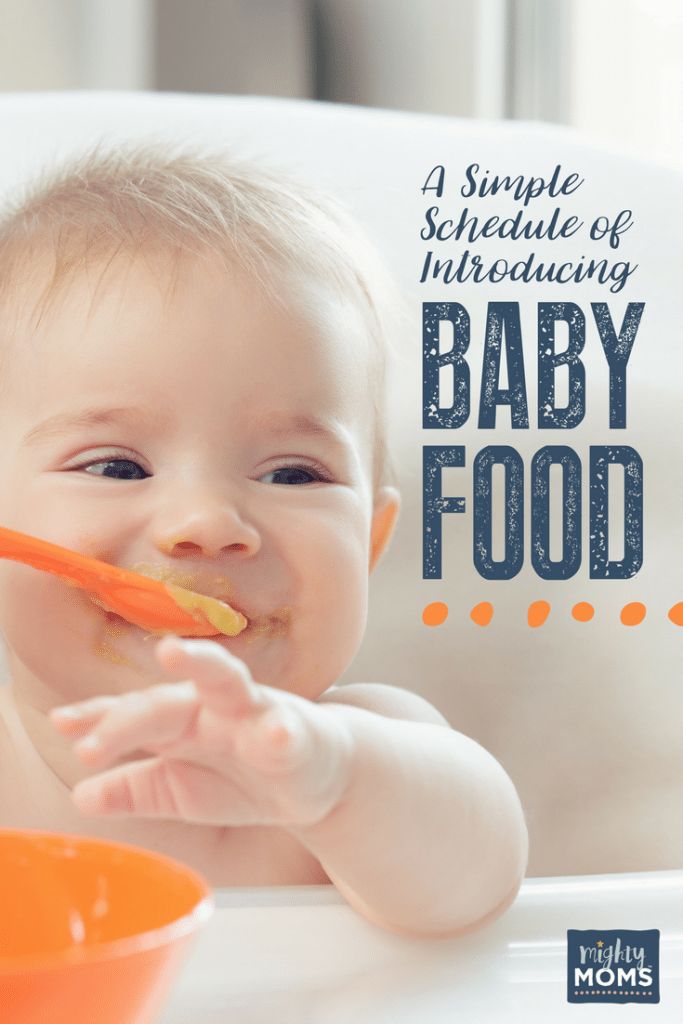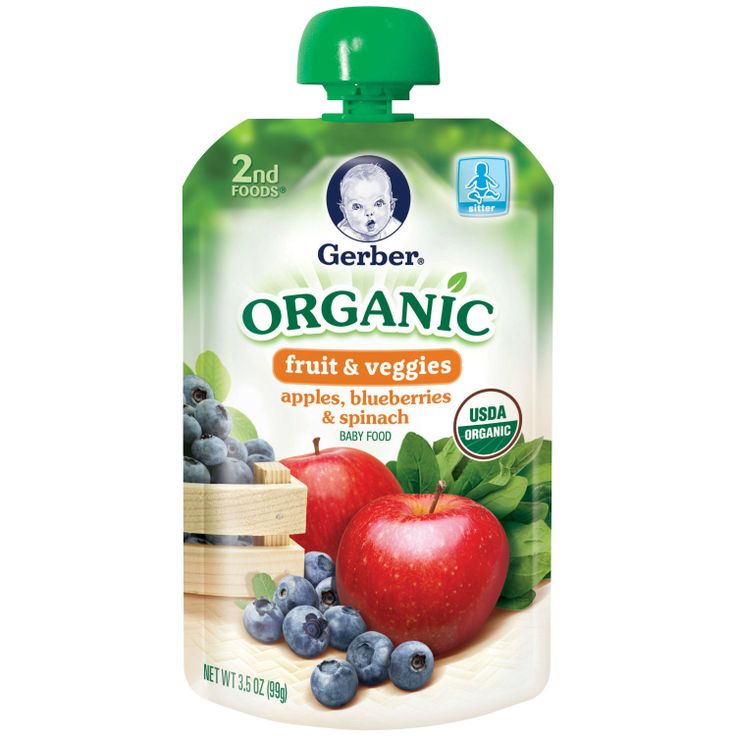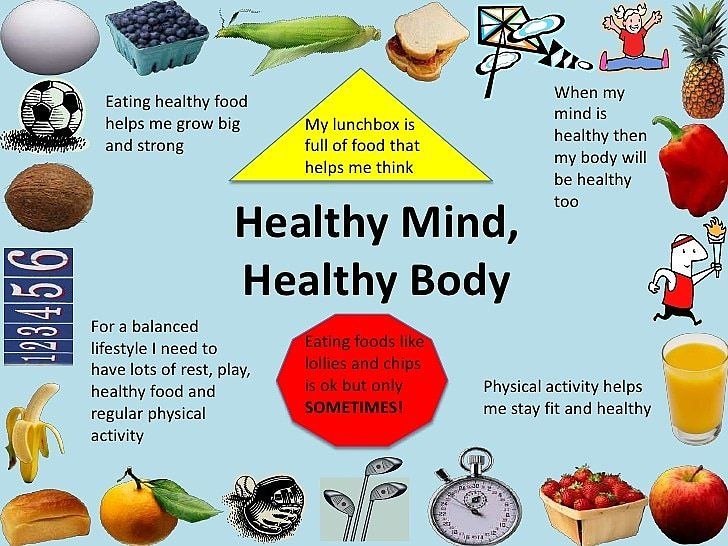Baby carrots eat em like junk food
Oh snap! New baby carrot campaign mimics junk food
Business News
Baby carrot farmers are launching a campaign that pitches the little, orange, crunchy snacks as daring, fun and naughty — just like junk food.
Baby carrot farmers are launching a campaign that pitches the little, orange, crunchy snacks as daring, fun and naughty — just like junk food. AP/ Source: The Associated Press
By EMILY FREDRIX
Baby carrot farmers are launching a campaign that pitches the little, orange, crunchy snacks as daring, fun and naughty — just like junk food.
A group of 50 producers hopes the 'Eat 'Em Like Junk Food' effort starting next week will double the $1 billion market in two or three years.
The goal is to get people to think of baby carrots as a brand they can get excited about — not just a plain, old vegetable. A website, www. babycarrots.com, features metal music and deep male voices chanting "Baby. Carrots. Extreme." On social networking site Twitter, the campaign's account suggests people eat them "like there's no tomorrow (maybe there won't be...)"
"This campaign is about turning baby carrots into a brand," said Jeff Dunn, CEO of Bolthouse Farms, the nation's top baby carrot producer with 50 percent of the market, and the most to gain if the market grows. "We think ultimately long-term here we're going to turn it into a very vital brand in the mind of consumers."
The plan begins in Cincinnati and Syracuse, N.Y., and will take at least a year to go national.
But carrot eaters around the country will get a taste of baby carrots' attempt at attitude with Scarrots next month. The Halloween version of baby carrots will come in spooky packaging and have glow-in-the-dark temporary tattoos, ideal for giving out to trick-or-treaters, Dunn said.
The marketing campaign by Crispin Porter + Bogusky, known for its edgy advertising of Burger King and Old Navy, will cost about $25 million.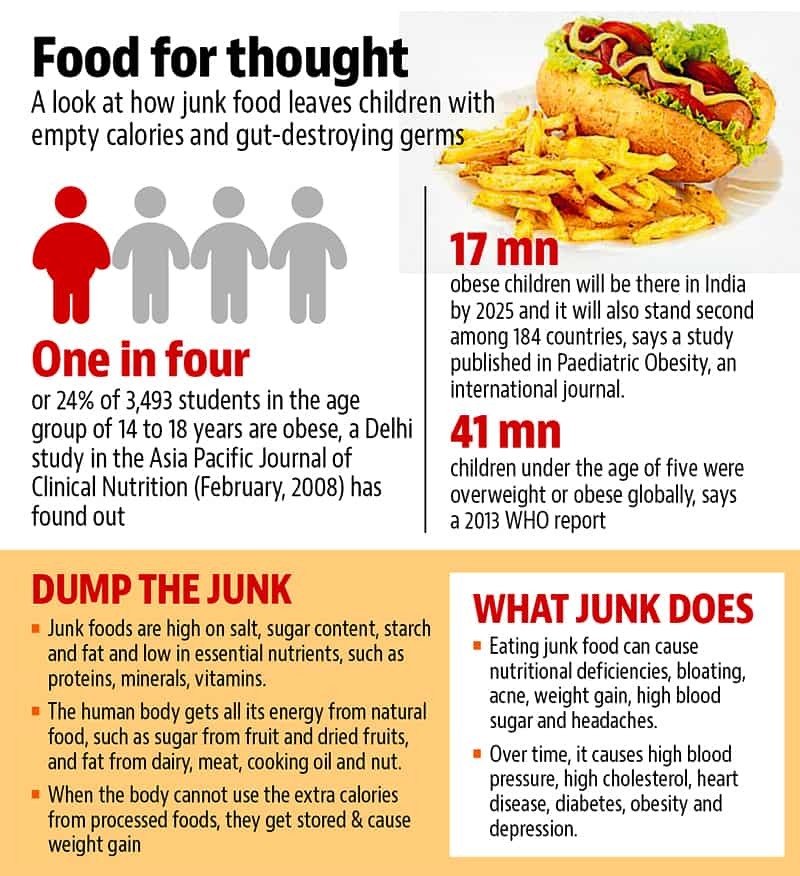
Television ads depict futuristic scientists studying crunch, a woman lusting after carrots and carrot sports featuring a young man who launches off a snowy mountain top in a grocery cart and catches in his mouth a carrot shot by a gun below. There are also billboards with messages like "Our crunch can beat up your crunch" and carrot vending machines in schools.
Stores will carry new packaging in crinkly, festive bags reminiscent of chip bags with designs that mimic the ads. There's a bright green one with a hip red bunny wearing sunglasses, and dark, futuristic packaging with bright orange lines coming out of a carrot.
The carrot group and its agency studied other campaigns — such as the "Drink Milk" effort" — and decided to push further with baby carrots, beyond marketing the benefits of the vegetables.
"You didn't need to talk about any of the health benefits. Everyone knows carrots are good for you," said Tiffany Rolfe, vice president and group creative director at Crispin, Porter + Bogusky. "Our goal was to separate it from being a vegetable as much as possible, to create a new category for carrots."
"Our goal was to separate it from being a vegetable as much as possible, to create a new category for carrots."
Sales of baby carrots — which are, in fact, not babies at all but rather small, peeled carrot shapes cut from larger ones — have fallen in the mid-single digits in the past two years as people spend less in the down economy, Dunn said. That includes buying bigger carrots and cutting them up themselves to save money.
Baby carrots were introduced in the mid- to late 1980s, created for their convenience of being an easy snack. Sales grew quickly in the first 10 to 15 years, but the growth tapered off, Dunn said.
For now the campaign will roll out gradually and focus on marketing. But Dunn, a former president and chief operating officer of Coca-Cola North America, said new variations could be developed, including baby carrots with ranch flavoring.
"How high is up?" he said of the market's potential. "That's the real question, what's possible here? We put it out there, and we'll learn and evolve. "
"
EMILY FREDRIX
An Experiment In Marketing : NPR
Extreme Baby Carrots: An Experiment In Marketing Can a $25 million ad campaign make carrots as cool as junk food? A group of carrot farmers are betting yes. Their ads, which feature explosions and airborne carrots, aim to rebrand the vegetable's image for kids.
Children's Health
Heard on All Things Considered
Extreme Baby Carrots: An Experiment In Marketing
Carrot farmers are banking on a $25 million ad campaign to make carrots as cool as junk food. Crispin Porter + Bogusky via AP hide caption
toggle caption
Crispin Porter + Bogusky via AP
YouTube
If you try to tell teenagers that they should eat carrots because they are full of vitamins and good for their eyes, you're probably not telling them anything they don't already know. And, in fact, your message may be really annoying, says Ellen Thieken, a student at Mason High School near Cincinnati.
"When people hear 'healthy,' it scares them a little bit," says Thieken. "A lot of people are like, 'I hate healthy food. I don't want to eat vegetables and stuff.' "
So what are a bunch of carrot farmers who are trying to boost sales supposed to do? Well, if you can't beat 'em, join 'em. A group of farmers have gotten together to launch a $25 million ad campaign aimed at making packaged baby carrots cool. The idea is that kids may eat more of them if they can think of carrots as a kind of junk food.
Rebranding 'Healthy'
In one ad spot, a beautiful young woman stands behind a machine gun. She's in the middle of a desert canyon, and she fires off rounds of carrots at a guy who is flying full-speed toward her in a motorized shopping cart.
She's in the middle of a desert canyon, and she fires off rounds of carrots at a guy who is flying full-speed toward her in a motorized shopping cart.
Since the early '90s, baby carrots and other fresh-cut carrots have become the fastest growing segment in the carrot industry, according to the USDA. Here's a look at the evolution of the baby carrot.
Around 2,000 years ago: Carrots are first grown in what is now Afghanistan.
1700: The Dutch cultivate orange carrots. Before then, carrots were often purple or yellow.
1986: A California carrot grower invents the baby carrot to avoid throwing out some of the broken and misshaped carrots taken from the packing line.
Early 1990s: Baby carrots find mainstream appeal.
2006: Carrot consumption is at 11.8 pounds a person per year.
Source: USDA
At the end of the ad, there's a big, fiery explosion when the grocery cart goes over the cliff. An adult might ask, "Why?" But according to high school senior Caleb Warwick, it's not about meaning -- it's about feeling.
An adult might ask, "Why?" But according to high school senior Caleb Warwick, it's not about meaning -- it's about feeling.
"It's just to show the overall sense that this is an extreme, just crazy, you know, new idea," says Warwick. "That's the explosion: the sheer power of awesome."
Convincing kids that baby carrots are extreme, and that the crunch is really awesome, may seem over the top. But marketing expert Bob McKinnon at YellowBrickRoad Communications says that's the whole point. Think about ads for Doritos or Mountain Dew.
"I think it's a satire on that," says McKinnon. "It's like junk food advertising is a bit ridiculous, so let's have fun with it."
He says that hopefully it will make kids want to eat baby carrots. It strikes a tone of irreverence and sarcasm that teenagers often appreciate.
Into Vending Machines
The carrot campaign also has a strategy to get bags of baby carrots into teenagers' hands easily via school vending machines. Mason High School is one of the first schools in the nation to try one out.
Mason High School is one of the first schools in the nation to try one out.
"Right now, it is a fad," says Warwick. He says that suddenly carrots seem very popular. "It's like: Oh my gosh, look -- carrots."
It's not as if kids have never seen baby carrots. But the combination of the new packaging, the branding and the ads seem to be making them more appealing.
A new campaign is geared toward getting kids to think about carrots as a kind of junk food. Even the packaging is designed to look like it carries junk food. hide caption
toggle caption
"I think they're cute," Thieken says.
And they even seem to taste better, she says. "I think they're, like, more moist almost."
And with only 32 calories for a small bag, Thieken says it's a great snack.
Unlike the boys in her class, Thieken says she's not impressed with the action ads. "Guys love action movies because stuff explodes," she says. But she says the campaign may help carrots seem cool. As part of one of her classes at school, she's working with a group of students to come up with their own marketing plan.
But she says the campaign may help carrots seem cool. As part of one of her classes at school, she's working with a group of students to come up with their own marketing plan.
Kids used to think of carrots as something that their mom put on their plates at dinner. But by putting baby carrots in vending machines, it puts them on even footing with other packaged snacks.
"I think it gives it more of a market than a vegetable at dinner," says student Cody Schrand. "It's something to eat during the day."
And maybe it's tastier because the packaging is funky and hip -- and mom didn't pick it out.
Sponsor Message
Become an NPR sponsor
90,000 what foods children should not eat and how to teach them to eat right? Proper nutrition of children is underestimated by many. After all, our parents, grandparents somehow grew up without this knowledge. But in fact, the older generations, who grew up in conditions of total scarcity, did not have to fight temptations. They just didn't exist. And the products that were available were much more suitable for the definition of proper nutrition than the food that children now eat. And it's not even about fast food, the dangers of which are known to almost everyone. Nutritionists and other children's doctors spoke about what foods children should not eat and how to teach them to eat right in an interview with MIR 24. nine0003
They just didn't exist. And the products that were available were much more suitable for the definition of proper nutrition than the food that children now eat. And it's not even about fast food, the dangers of which are known to almost everyone. Nutritionists and other children's doctors spoke about what foods children should not eat and how to teach them to eat right in an interview with MIR 24. nine0003
“Nutrition is one of the main factors determining the normal development of a child, it has the most direct impact on his growth and health,” says pediatrician, senior medical consultant of Teledoctor 24 Maria Mamedova . - It is most important to observe the principles of rational nutrition in children of early and preschool age. This period is characterized by intensive growth processes, improvement of the functions of many organs and systems, especially the nervous system, enhanced metabolic processes, and the development of motor activity. nine0003
What not to eat for babies and preschool children
Vinogradov pediatrician Vladislav Zyablitsky , in addition to harmful foods for children of all ages, pediatricians emphasize foods that children under 3 years old should not eat. Here they are.
Here they are.
- Seafood such as shrimp, mussels, crabs (allergic).
- Sausages, sausages, sausages (overflowing with flavors, dyes, preservatives). nine0022
- Lamb, fatty pork, meat of waterfowl (geese and ducks) - contain an excessive amount of refractory fats of animal origin.
- Melon and grapes (increase gas production and increase the load on the pancreas).
- Everyone's favorite delicacy is ice cream (has an increased level of fat content, sugar content, harmful additives that can cause allergies).
- Honey if the child is prone to food allergies.
- "Adult" non-adapted milk (dangerous with allergies, problems with the gastrointestinal tract, decreased immunity of the child's body, metabolic disorders, atherosclerosis and arterial hypertension in the future). nine0022
- Cakes, cakes, sweets, chocolate, puff or shortbread cookies, other confectionery. They are crammed with food additives, sugar, fat, but contain almost no nutrients.

- Cocoa - due to the high fat content of the drink and the invigorating alkaloid theobromine.
- Do not give tomatoes until 1 year of age (they overload the kidneys).
- Only after 1.5 years is it permissible to give the child garlic, onions, bell peppers in small amounts.
- Pickled cucumbers and pickled tomatoes should not be given until 2 years of age (due to bacteria). nine0022
- Nuts, especially peanuts (very strong allergens).
- Celery (excessively activates the activity of the pancreas).
- Red and black caviar is forbidden up to 5 years (very allergenic, includes preservatives; contains excess salt, which is fraught with kidneys). For the same reason, salted fish is prohibited.
- Mushrooms - the child's body does not contain enough enzymes to digest them. In addition, mushrooms accumulate radioactive substances and heavy metals.
Strictly not recommended for all children, regardless of age: salty crackers, chips, french fries, hamburgers and other fast food.

“The best way to avoid a child's love for such food is not to go to places where it is sold. Confidently walk past the bright signs of fast food restaurants, ignore the aroma of pies in a kiosk near the subway, forget about noodles and instant soups. After all, this food is a direct path to obesity, diabetes, to malfunctions of the immune and cardiovascular systems,” says Maria Mammadova. The pediatrician adds a few more to the list of products prohibited for preschoolers. nine0003
- Semi-finished products . It is fast, convenient, but not useful for children whose gastrointestinal tract is imperfect - the processes of digestion, the production of enzymes and bile in preschool children are still immature. The nutritional value of semi-finished products is a dubious question, and one can only guess about the qualitative composition of their components. For the production of semi-finished products, vegetable proteins are often used, which are inferior to meat and fish in terms of amino acid composition.
 Excess salt in ready-made semi-finished products creates an unnecessary burden on the child's kidneys, food additives provoke allergies, spices irritate the gastrointestinal mucosa, starch and soy are poorly digested, causing functional disorders of the digestive system. nine0022
Excess salt in ready-made semi-finished products creates an unnecessary burden on the child's kidneys, food additives provoke allergies, spices irritate the gastrointestinal mucosa, starch and soy are poorly digested, causing functional disorders of the digestive system. nine0022 - Minced meat for children's food is best prepared by yourself, as the store-bought often contains a lot of fat, connective tissue, and bird skin. The same applies to minced fish: it is prepared from low-value fish varieties, and only a production specialist can control the quality of the product.
- Sausages . Some parents sometimes replace a full-fledged meat or fish dish on the children's table with sausages - for the same reasons of saving time. The cost of a kilogram of the most optimal quality sausages is almost equal to the price of meat (veal, beef, pork), and sometimes even higher. But this does not mean at all that meat of a certain category is present in the composition of the product in the amount stipulated by the regulations.
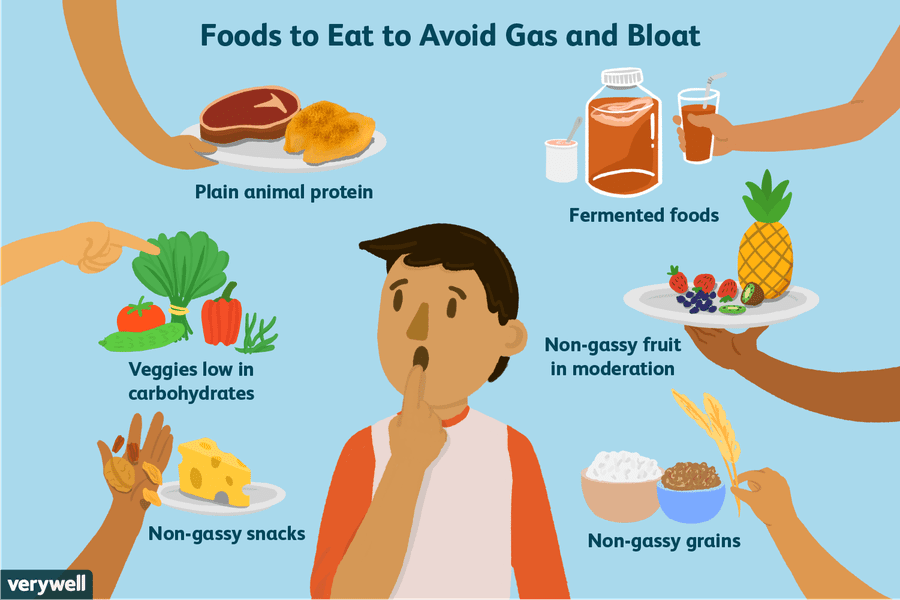 According to GOST, premium sausages consist of beef, pork, powdered milk or cream and eggs. If the product is of a lower grade, then it contains up to 10% trimmed meat, starch and a protein stabilizer. However, on the shelves of shops there are mainly sausages made according to specifications - according to the standards created by the manufacturing enterprise itself. That is why the composition of the product changes and becomes “richer”: various fillers (cheese, paprika), soy, sodium nitrite (color stabilizer) and monosodium glutamate (flavor enhancer), ascorbic and citric acid, as well as salt and spices are added to it. All these components, depending on the concentration in the product, adversely affect the health of the child. nine0022
According to GOST, premium sausages consist of beef, pork, powdered milk or cream and eggs. If the product is of a lower grade, then it contains up to 10% trimmed meat, starch and a protein stabilizer. However, on the shelves of shops there are mainly sausages made according to specifications - according to the standards created by the manufacturing enterprise itself. That is why the composition of the product changes and becomes “richer”: various fillers (cheese, paprika), soy, sodium nitrite (color stabilizer) and monosodium glutamate (flavor enhancer), ascorbic and citric acid, as well as salt and spices are added to it. All these components, depending on the concentration in the product, adversely affect the health of the child. nine0022 - Smoked meat and fish products today are often produced not by the traditional method of smoking, which is also not very useful, but with the use of a special (and very harmful to the human body) substance that gives the product the necessary taste, smell and color.

- Carbonated soft drinks . This is a fully synthetic product. And even a certain percentage of natural juice in the composition of some "soda" is not able to compensate for the harm that artificial dyes, preservatives, flavors, sweeteners and carbon dioxide cause to a fragile body. They not only affect the gastrointestinal tract of the child, spoil the tooth enamel, but can also provoke a lot of serious diseases. The best drink for a child is water (clean drinking, from two years old - non-carbonated, but not medicinal), freshly squeezed juice diluted with water, fruit or dried fruit compote, berry juice. nine0022
- Vegetables and fruits "out of the can" . There are very few vitamins in products of enhanced heat treatment and long shelf life. Canned vegetables contain a lot of salt and vinegar, fruits - a lot of sugar. And if this is not home preservation, then also synthetic preservatives. Children should be introduced to such products no earlier than seven years.
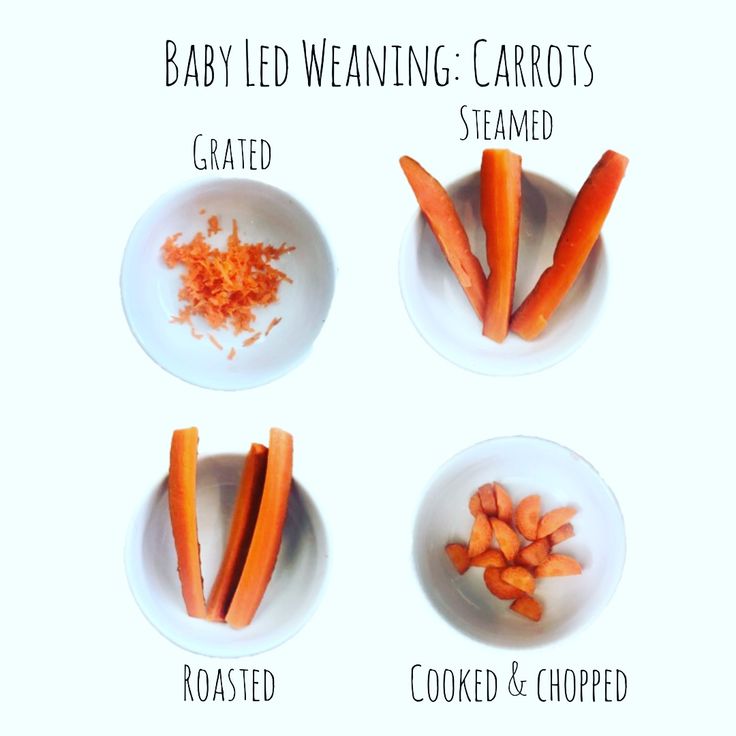 It is better to freeze vegetables, fruits and berries in summer and autumn in order to cook delicious vegetable stews, casseroles, berry fruit drinks and fruit desserts in winter. Or buy ready-made frozen products, remembering that the shock freezing method is the most gentle. nine0022
It is better to freeze vegetables, fruits and berries in summer and autumn in order to cook delicious vegetable stews, casseroles, berry fruit drinks and fruit desserts in winter. Or buy ready-made frozen products, remembering that the shock freezing method is the most gentle. nine0022 - Mayonnaise and ketchup . Homemade mayonnaise, a product with a high fat content, can be given to a child only after three years, in small quantities and not systematically. From ready-made mayonnaise, which contains flavors, flavors, dyes, thickeners, stabilizers, emulsifiers and preservatives, it is better to refuse altogether. Ketchup also does not apply to baby food. There are a minimum of vitamins and nutrients in it, hot spices will harm the children's body, and they are produced using all the same preservatives and synthetic additives (to improve color, taste, aroma). nine0022
You can, but be careful: from sweets to spices
This group includes products that children, according to Maria Mamedova, can use under certain conditions, although they can only be introduced from the age of three and they should not be present in the diet constantly.
Sweets . Experts believe that chocolate is contraindicated for children under three years old. It creates an extra load on the pancreas, causes allergies, excites the nervous system of the crumbs, and can provoke caries. An alternative to chocolate are sweets made from carob, a sweet powder made from the pulp of carob. It tastes like cocoa, is very healthy and, unlike chocolate, has no "side effects". nine0003
The later the child gets acquainted with sweets, the better. But since everything sweet is a source of easily digestible carbohydrates that the body needs, as a dessert, you can occasionally offer your child a little marshmallow, marshmallow, marmalade, jam (while remembering the dangers of synthetic dyes and flavors). It is even better to replace store-bought sweets with berries and fruits, honey (if there is no allergy), dried fruits, sweets and homemade jam.
Flour products . Their regular use provokes excess weight. You can sometimes allow your child to eat a bun or a pie (for an afternoon snack), but it is better to limit yourself to biscuit cookies or drying. Products made from puff, shortbread, pastry, which include margarine, should be completely abandoned - its components increase the level of cholesterol in the blood and provoke the development of vascular diseases in the future.
You can sometimes allow your child to eat a bun or a pie (for an afternoon snack), but it is better to limit yourself to biscuit cookies or drying. Products made from puff, shortbread, pastry, which include margarine, should be completely abandoned - its components increase the level of cholesterol in the blood and provoke the development of vascular diseases in the future.
Herbs and spices . They make the taste and aroma of food richer, but seasonings for children's food must be selected very carefully. After a year, greens (dill, parsley, cilantro) can be added to the child’s food, from 1.5-2 years old - onions, garlic (in hot dishes), from 3 years old - bay leaf. Spices used in adult dishes can irritate a child's esophageal mucosa or provoke allergies. nine0003
Ready mixes of spices, various flavoring seasonings should not be added to food for a child, because in addition to the main components, they contain a lot of salt and various preservatives.

Instant porridges . It is very convenient to use them - you do not need to wash the cereal, wait until it is cooked. It is enough just to pour boiling water over a portioned bag, in which everything is already included - sugar, fruit or chocolate, cream or milk. And also - flavors, flavor enhancers and other synthetic additives. The nutrients and vitamins that whole grains contain are lost during the numerous processing steps. Therefore, the use of such porridge in baby food is justified only in emergency cases. For example, on the road - it's still better than eating sausage or fast food. nine0003
How to teach a child to eat healthy food?
“First of all, by example,” says Maria Mamedova. - If the house does not eat junk food, then the child will daily want what he is used to from an early age. Scientists say that even during pregnancy and breastfeeding, the future mother's cravings for certain foods are passed on to the child.
It is important to prepare the right snacks in advance so that children between meals do not grab cookies or candy from the table, but fruit or granulated bran. Delicious and healthy at the same time. nine0003
If there is soda or sweet store-bought juice in the refrigerator, you can give a 100% guarantee that the child will drink it first of all, and not the vital clean water. Therefore, the water filter should be in the most visible place so that it constantly catches the eye.
“Watch what your child eats and praise the correct choice. Focus on those products, the consumption of which leads to health, beauty and excellent sports achievements: depending on what he is passionate about,” says Maria Mammadova. nine0003
Most unhealthy foods can be replaced with healthy ones. Potato and corn chips will replace dried fruit slices. Instead of candy, you can eat dried fruits and dried berries. It is important not to confuse with candied fruits, in which there is no less sugar than in candies.
Eating regularly reduces the number of snacks, which means better control of what children eat. If breakfasts, lunches and dinners are held at a common table with adults, then the opportunities to intercept a couple of sweets instead of soup are significantly reduced. But healthy snacks are also not harmful, this is the key to the good functioning of the digestive system. Make them accessible and child-friendly. What can be used if there is no time to cook? nine0003
- Cut carrots, sweet peppers, cucumbers into containers.
- Popcorn free of artificial additives and saturated fat is a great whole grain snack.
- Pour fruit and vegetable smoothies into small bottles.
- Place the bowl of fruit in the most visible place.
Let the children participate in the menu design, so they become more interested in the result. It's always nice to get exactly what you ordered, what you like, for dinner. Do not force yourself to eat unloved foods, no matter how useful they may be.
You can always find an equally useful replacement. And pay attention to the fact that healthy products are of high quality. nine0003
Reduce the amount of simple sugars in your diet. To do this, it is not at all necessary to put the child on a diet - just look at the label of those products that you buy out of habit, not paying attention to the composition.
- Replace your traditional loaf with whole grain bread.
- Instead of sweet yoghurt, choose natural yoghurt with a fat content of no more than 1-3%.
- Make homemade cookies instead of store bought.
- The best replacements for store-bought drinks are water and fruits or fruit and vegetable smoothies. nine0022
- Try to avoid trans fats. They are most commonly found in processed foods, fast food, fried foods, frozen pizzas, pies, cookies, margarines, and sandwich mixes.
- If fried foods are a big part of your diet, try gradually switching to stews, steamed or baked foods.

It is important to maintain a pleasant atmosphere while eating. It is better to postpone the showdown and "debriefing" for another time. TVs and tablets should also be turned off. When a person is busy watching a cartoon or TV show, his brain does not think about food, which adversely affects digestion and leads to obesity. nine0003
“By the way, the correct process of eating can be learned from babies,” says Maria Mamedova. “They only eat when they are hungry, they chew their food thoroughly, giving it all their attention. And they stop eating as soon as they are full. At the same time, children under three years old cannot be forced to eat foods that they do not like. And they choose, as a rule, exactly those that the body needs at the moment.
Schoolchildren and adolescents: six elements of their healthy diet
In school-age children, the need for basic nutrients and energy remains high and is due to physiological and biochemical characteristics: accelerated growth and development, differentiation of various organs and systems, especially the central nervous system, and the intensity of metabolic processes.
“It is important to follow a differentiated approach to determining nutritional needs depending on the type of student's activity,” says Maria Mamedova. - So, for schoolchildren studying in specialized schools with increased mental and physical stress (mathematical, with the study of foreign languages, sports schools, etc.), the total calorie content of the diet should be increased by 10% of the age norm. During the child's stay in health-improving institutions (holiday camps, forest schools, etc.) due to increased energy consumption (intensive physical education, swimming, hiking, etc.), it is also advisable to increase the calorie content of the diet by 10% with a uniform increase in all nutrients and preservation a balanced diet." nine0003
According to the expert, a properly established diet is of great importance for school-age children. It is most expedient to establish the following diet: 1st meal - at 8:30; 2nd - at 12:00-13:00, 3rd - at 15:30 - 16:00, 4th - at 19:00. Breakfast and dinner should be 25% of the daily calorie intake, second breakfast - 15%, and lunch - 35% of the daily calorie intake.
Breakfast and dinner should be 25% of the daily calorie intake, second breakfast - 15%, and lunch - 35% of the daily calorie intake.
If possible, school breakfasts should be hot. If this is not possible, then a milk-fruit breakfast (milk, bun, sweet curd cheese or processed cheese, fresh fruit) can be recommended. Lunch should consist of soup, a second course of meat (fish) and a side dish, a sweet dish (compote, jelly, juice or fresh fruit). It is desirable that before the first course there is a salad of fresh vegetables or a vinaigrette. A teenager can already be offered radishes, radishes with sour cream or vegetable oil, tomatoes, fresh cucumbers with green onions and sour cream instead of salad before meals. Vegetables stimulate appetite, promote the release of digestive juices and improve digestion. nine0003
According to Maria Mammadova, there are six groups of products that are simply vital for the full growth and development of a teenager.
- Complex carbohydrates .
 These are the main suppliers of energy, which is so necessary with rapid growth. They are found in cereals and cereals.
These are the main suppliers of energy, which is so necessary with rapid growth. They are found in cereals and cereals. - Products containing protein . These are animal meat, poultry and fish. Protein is the main building material for soft tissues and internal organs. And, by the way, meat, especially red meat, contains iron, a lack of which can cause anemia in a teenager. nine0022
- Vegetable fiber . It is nothing but vegetables, root vegetables and fruits. Fiber is necessary for the normalization of the gastrointestinal tract and cleansing the body of toxins due to the natural antioxidants contained in these products.
- Vegetable fats . These are vegetable oils and various nuts. Eating these foods can be a great way to help a teenager avoid the common problems of hair loss and brittle nails at this age. nine0022
- Milk and dairy products . These are irreplaceable suppliers of calcium, vitamin D and phosphorus in the nutrition of adolescents.
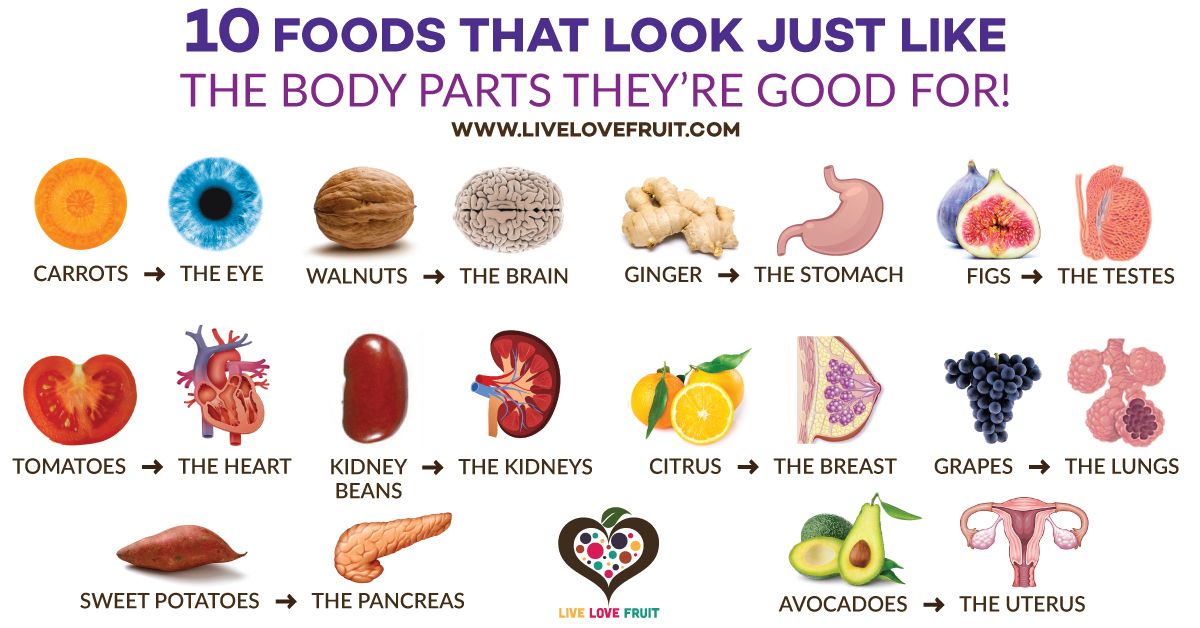
- Pure drinking water . For normal functioning of the body, you need to drink an amount of water per day at the rate of 30 ml per 1 kg of body weight. That is, a teenager who weighs 50 kg should drink 1.5 liters of pure water, not counting other liquids.
And if the younger generation adheres to these simple nutritional recommendations, health and normal development will be ensured. nine0003
“If in adolescence a person does not get used to healthy food and does not begin to eat right, then it will be quite difficult for him to change his habits and eating habits. And problems associated with malnutrition can manifest themselves not only in being overweight, but also in the development of various diseases, ”says the doctor.
If you are serious about improving your child's diet, do not try to do it in one day. Here are a few steps to help you transition smoothly to a new diet. nine0003
- Start replacing your usual foods with healthier ones.
 At the same time, you can tell the teenager why you decided to do this, what knowledge you lacked before and where you got it.
At the same time, you can tell the teenager why you decided to do this, what knowledge you lacked before and where you got it. - Make sure that the child does not get the feeling that you are depriving him of something. Let the impression be the opposite: we as a family decided to try something new, gain interesting experiences and improve the quality of life.
- Go shopping together, read the ingredients on a box of corn flakes, and try to choose ones that are free of refined sugar and artificial flavors. nine0022
- Find out more about nutrition, a balanced diet and physical activity, and most importantly, share this knowledge with your children. Ask them to tell you what is happening with their body, then they will become more aware of the issue and observe the effect of changing nutrition. And maybe they will look for information about it themselves.
Parents are able to form an optimal eating behavior in a child. But remember that eating right yourself and setting a good example for children is much more important than talking long and hard about the benefits of healthy eating. nine0003
nine0003
How to transition a child to solid foods - what is BLW
The BLW theory was introduced in 2010 in the book Baby-Led Weaning by Jill Rupley and Tracey Marquette. This approach to first foods is popular in the US, while there is not much information about it on the Russian-language Internet. In this article, we will talk about what are the features of BLW, what foods can be given to a child and what should not be, what precautions should be taken into account.
Baby-Led Weaning can be translated as “baby food of choice”. You can apply this method no earlier than six months of age, it is better - from eight months. According to BLW, from this age, the child can be given regular food (which one - we will discuss below), while continuing to breastfeed or feed formula milk. nine0003
Benefits of BLW
Compared to baby purees, BLW has a number of advantages, in particular:
- You don't have to spend time preparing baby purees.
- The child can be at the family table from the very beginning and eat the same food as the parents.

- This feeding method promotes the development of visual and fine motor skills.
- The child learns to chew, swallow and decides what and how much to eat - this is how the foundations of healthy eating behavior are laid. nine0022
Also read: From 1 year and older - what and how to feed a small child
How to understand that a child can be given solid food
- There are several signs - how to understand that a child can already be given regular food:
- Child can sit up alone with little or no support.
- The child wants to chew something, even if he does not yet have teeth.
- He takes food with his thumb and forefinger instead of his palm. nine0022
- The child shows interest in food, grabs food from the table.
- It is advisable to consult a pediatrician before giving a normal meal to a child.
What foods can be given as first complementary foods
Of course, not all foods can be given as first complementary foods. Foods that are suitable for first foods according to BLW are:
Foods that are suitable for first foods according to BLW are:
- Steamed or baked vegetables (broccoli, carrots, pumpkin pulp, zucchini). nine0022
- Ripe fruits (apple, banana, avocado, mango, watermelon, peach, pear, plum).
- Protein food (natural cheese, egg yolk, meat, liver).
- Carbohydrates (gluten-free pasta, brown rice, millet, buckwheat, gluten-free bread).
Also read: 6 Months and Older - Which Dairy Products to Give to Young Babies
BLW First Feeding Rules - Do's and Don'ts
- Make sure your child is ready for regular meals.
- Continue breastfeeding or formula feeding until at least 10–12 months of age.
- Sit the child in a comfortable position - he should sit upright without leaning back.
- Cut food into large pieces so that it is easy for the child to take them.
- Start with soft foods: ripe fruits, steamed vegetables.
- Take your child to the family table.
 nine0022
nine0022 - Get ready for a mess.
- Take your time and don't rush your baby - the meal will take at least 10-15 minutes.
- Pay attention to signals - for example, if the child is throwing food around, he may have already eaten.
- Do not offer complementary foods if the child is tired or in a bad mood.
- Do not coax your child to eat another bite and do not offer too much food at a time.
- If your child doesn't want to eat regular food and likes baby purees more, don't be upset. Fortunately, there are many foods available for children today that can be spoon-fed, such as baby yogurt, cottage cheese spreads, and others. nine0022
See also: Baby food - 7 dairy products for young children
Precautions - things to consider
- Avoid foods that a child can choke on, such as nuts, grapes, cherries, grape tomatoes.
- If you want to give your child foods such as cherries and grapes, cut them in half and remove the pits.

- Hard foods that a child cannot chew should be boiled (eg carrots). nine0022
- Find out in advance how to give first aid if a child chokes.
- Be careful with foods that can cause allergies: foods containing gluten, peanuts and other nuts, egg whites, seafood and some types of fish, citrus fruits.
- Do not give your baby unhealthy food and fast food: chips, popcorn, foods containing sugar, sweets.
- Banned honey, sugar and chocolate. Salt - in very small quantities with the permission of a doctor. nine0022
- Never leave a child with food unattended.
Based on materials from parents.com, mamanatural.com, malyshi.livejournal.com
The information and recipes contained in this Blog may not meet the user's expectations, are presented for use without regard to the individual characteristics of the user's health and are used by the user at their own discretion and under personal responsibility.
Information, documents and related graphics and recipes taken from other sources and published on this site https://milkalliance.